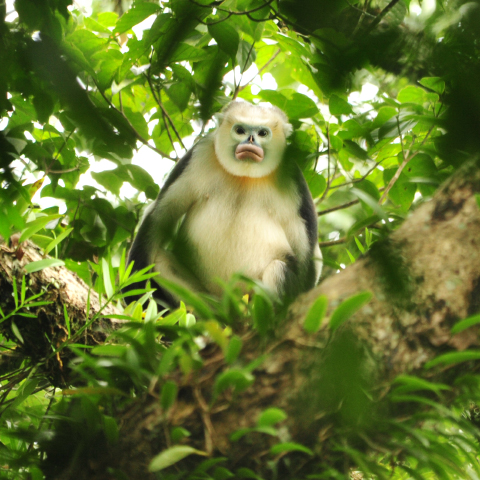Conservation Actions
A local conservation organization, Celebes Bio, has begun surveys on the island. A nascent tourism industry is forming slowly. Government proposals for expansion, including an airport, could threaten key habitat.
Location Information
The species is found only on Siau Island (Indonesia), although it is conceivable that they are also present on some very small islands that are in proximity to Siau and separated only by shallow ocean. The Sangir and Siau islands are separated by ca 60 km of ocean with depths >1,000 m with zero gene flow between Tarsius sangirensis and T. tumpara.
Geographic Range
Extant
Indonesia
Population Information
Shekelle and Salim (2009a) used remote sensing of remaining habitat and population density estimates from studies of other tarsier taxa to estimate the remaining populations being 1,358–12,470 individuals. The large range is a result of a large number of unknown pixels (obscured by clouds) in the GIS data set. Field surveys indicate no remaining primary habitat, however. Local people reported considerable declines of numbers since the late 1990s (Shekelle and Salim 2009b).
Threats
The primary threat to this taxon is that its range is restricted to one small, volcanic island. The volcano, Mt. Karengentang, is active and dominates more than 50% of its geographical range. This threat is exacerbated by a relatively large human population (311 people/km²) that has converted virtually all of the primary habitat to some form of human use (Shekelle and Salim 2009a, 2009b). In these ways, Tarsius tumpara faces a set of threats similar to those faced by T. sangirensis, but the threats are more acute for T. tumpara: a smaller island, a more active volcano, and higher human population density. Most troubling, however, are numerous credible reports that the local human population regularly eats tarsiers, up to 5 to10 animals at a sitting, and that tarsiers have been extirpated from areas where they were common as recently as 10 years ago. The population is likely scattered and reported heavily disturbed land on the southern end of the island and the land set apart for conversion. The tarsiers are found in two remote sites of the island where they are hunted and consumed as food. Might be found in Mount Tamata which is deemed ‘unofficially protected’. Tarsius tumpara is considered to be one of the world’s 25 most endangered primates by the IUCN Species Survival Commission Primate Specialist Group (Shekelle and Salim 2007, 2009b).
Predation by feral cats and dogs are associated threats of habitat destruction due to human encroachment.
IUCN Red List Account Link
Please click here to see the species' IUCN Red List Account page.Photo Credits
Geoff Deehan - geoffdeehan@gmail.com (category and featured image)




